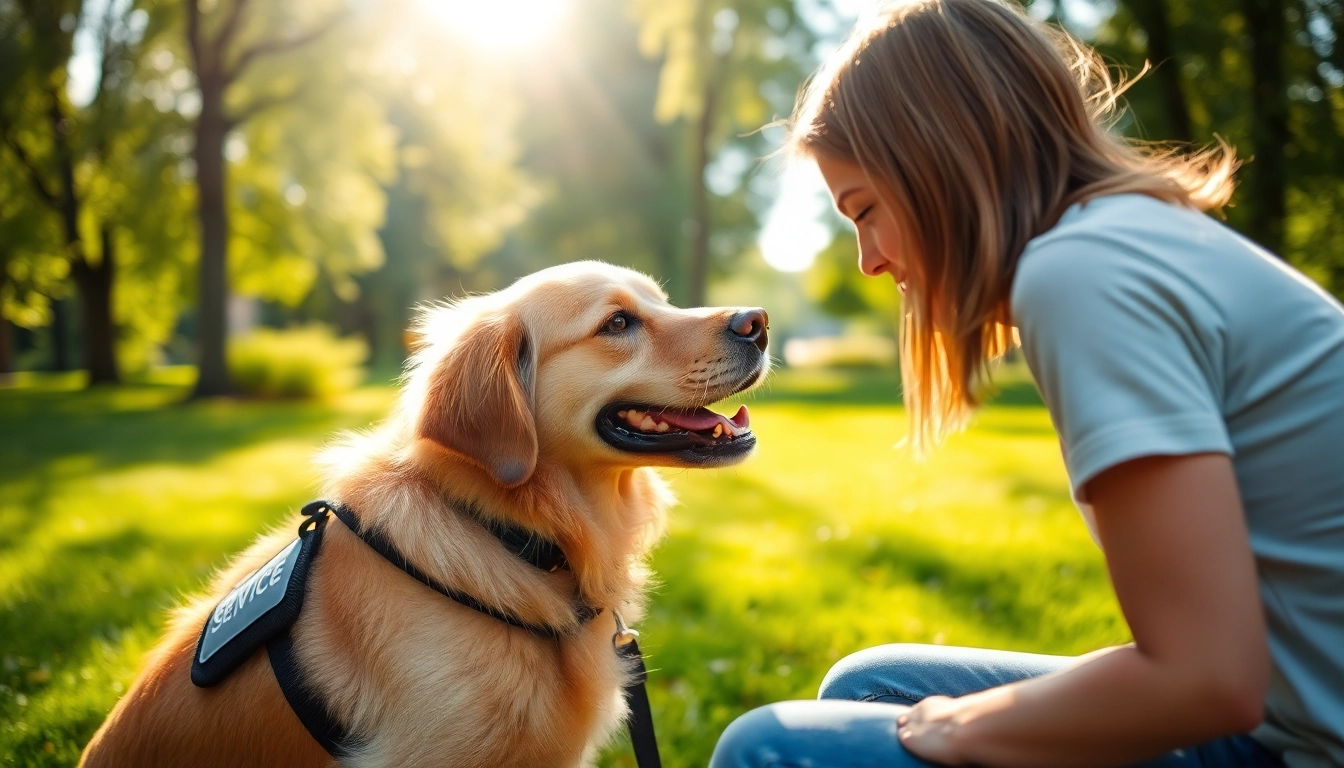Understanding Service Dogs
Definition and Purpose of Service Dogs
Service dogs are specially trained animals that provide assistance to individuals with disabilities, enabling them to lead more independent lives. These canines, often referred to as assistance dogs, perform tasks that are directly related to their handler’s disability. Unlike emotional support animals, which offer comfort through companionship, service dogs are legally recognized under the Americans with Disabilities Act (ADA) and are trained to perform specific tasks that help mitigate their owner’s disabilities. Examples of such tasks include guiding individuals who are blind, alerting those who are deaf, pulling a wheelchair, alerting and protecting a person who is having a seizure, reminding a person with mental illness to take prescribed medications, or calming a person with post-traumatic stress disorder during an anxiety attack.
Types of Disabilities Benefited by Service Dogs
Service dogs cater to a wide range of disabilities. Some of the common categories include:
- Visual Impairments: Guide dogs help individuals who are blind or have severe visual impairments navigate their surroundings safely.
- Hearing Impairments: Hearing dogs are trained to alert individuals who are deaf to important sounds such as doorbells, alarms, or phone calls.
- Mobility Impairments: Service dogs assist individuals with physical disabilities by retrieving items, opening doors, and providing stability when walking.
- Medical Response: Some service dogs are taught to recognize medical emergencies, such as heart attacks or seizures, and can alert their owner or call for help.
- Mental Health Disorders: Psychiatric service dogs help individuals with conditions such as PTSD, anxiety disorders, or extreme depression by performing tasks that alleviate symptoms such as panic attacks.
Legal Rights and Regulations for Service Dogs
Service dogs enjoy certain legal protections that allow them to accompany their handlers in public places where pets are typically not permitted. The ADA outlines these rights and specifies that businesses must allow service dogs to enter areas open to the public. It is crucial to understand that service dogs are not required to wear vests or have identification tags; however, they must be under control and behave appropriately in public settings.
Eligibility Criteria to Get a Service Dog
Assessing Your Needs for a Service Dog
The journey to obtain a service dog begins with assessing your specific needs. It’s essential to reflect on how a service dog could assist you in your daily life. Ask yourself the following questions:
- What specific tasks do I need help with?
- Do I have a disability recognized under the ADA?
- Am I prepared for the responsibility of caring for and training a service dog?
Understanding your unique needs will guide you in determining whether a service dog is a viable solution for enhancing your independence and quality of life.
Documentation Required for Application
When applying to get a service dog, you’ll typically need to provide documentation that outlines your disability and the specific tasks you wish the dog to perform. This documentation often includes:
- A letter from a healthcare provider or mental health professional stating the nature of your disability.
- Information on how a service dog can help mitigate your disability.
It is essential to note that not all service dog organizations require the same documentation, so reviewing their specific application requirements is crucial.
How to Provide Evidence of Disability
Providing evidence of your disability is a key step in your application process. This proof can include medical records, evaluation reports, and treatment plans that highlight the challenges you face due to your disability. Additionally, a letter from a licensed professional outlining your condition and how a service dog can assist you will strengthen your application. Make sure all documentation is clear, concise, and up to date to facilitate the approval process.
Steps to Get a Service Dog
Finding Accredited Training Organizations
The first step in acquiring a service dog is to identify accredited organizations that specialize in training service dogs. Research potential organizations by considering factors such as:
- Accreditations from reputable bodies like Assistance Dogs International (ADI).
- Reviews and testimonials from previous clients.
- The types of service dogs they provide and their training methodologies.
To get a service dog, it’s crucial to choose a reputable organization that aligns with your needs and values.
Application Process Explained
The application process for obtaining a service dog can vary depending on the organization. Generally, it involves filling out an extensive application form that collects information about your disability, needs, and preferences for a service dog. Some organizations may request photographs or ask for more specific details about your lifestyle to assess compatibility.
Be prepared for a thorough review process, which may take time based on the number of applications they receive. Accurate information ensured the organization can match you with the best possible service dog.
Interview and Matching with a Service Dog
After your application has been accepted, you may be invited for an interview. This step involves discussing your needs in detail and understanding how a service dog can fulfill those needs. During this process, the organization will assess your compatibility with potential service dogs, considering factors such as your energy level, home environment, and specific requirements. You may spend time interacting with different dogs to help determine the best match.
Training Process for Service Dogs
How Service Dogs are Trained
Training service dogs involves rigorous and specialized instruction. Trainers utilize positive reinforcement techniques to teach the dogs specific tasks. Training usually follows these stages:
- Basic Obedience: Dogs are taught essential commands like sit, stay, come, and heel.
- Task-Specific Training: This involves teaching the dog to perform tasks directly related to the owner’s needs, such as retrieving objects or alerting to sounds.
- Public Access Training: Service dogs learn how to behave appropriately in various public settings and how to enable their handlers to navigate through typical environments.
What to Expect During Training
The duration and structure of training can vary widely based on the training organization and the specific needs of the individual. Generally, training can take anywhere from a few months to a couple of years. Prospective handlers may participate in the training process to build a strong bond with the dog and learn how to manage their behavior effectively.
Ongoing Support and Training Resources
After the initial training, ongoing support and training resources are crucial for the successful integration of a service dog into your life. Organizations often provide follow-up training for both the dog and handler to ensure they are functioning effectively together. Access to training resources, workshops, and support groups can further enrich your experience and bond with your service dog.
Maintaining a Healthy Relationship with Your Service Dog
Daily Care and Responsibilities
Caring for a service dog involves significant daily responsibilities, including feeding, grooming, and regular veterinary care. Establishing a routine helps ensure the needs of your service dog are met while also fostering a healthy lifestyle for both of you. Important aspects of care include:
- Providing a balanced diet and fresh water.
- Scheduling regular exercise and playtime.
- Attending routine veterinary appointments for vaccinations and health checks.
Building a Bond with Your Service Dog
Developing a strong bond with your service dog is essential for effective teamwork. Engage in activities that foster intimacy, such as training exercises, playtime, and shared experiences. Consistent communication and positive reinforcement strengthen the trust between you and your dog, making your partnership even more effective.
Handling Public Spaces with Service Dogs
Having a service dog in public spaces can sometimes attract attention. It’s important to maintain control and provide guidance to your dog during these interactions. Ensure your dog behaves appropriately by practicing commands and reinforcing good behavior in social situations. Additionally, educate those around you about service dogs, encouraging respect for your dog’s working status, and help minimize disruptions.



